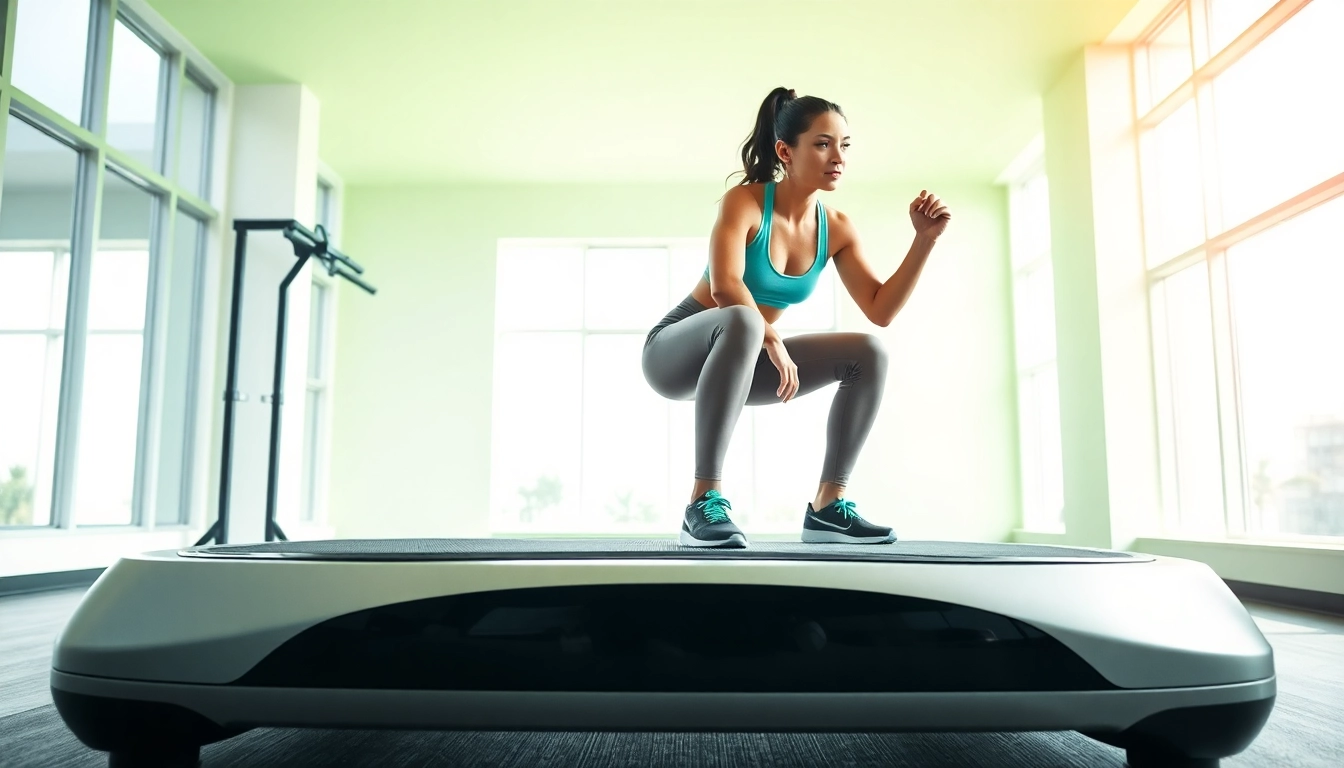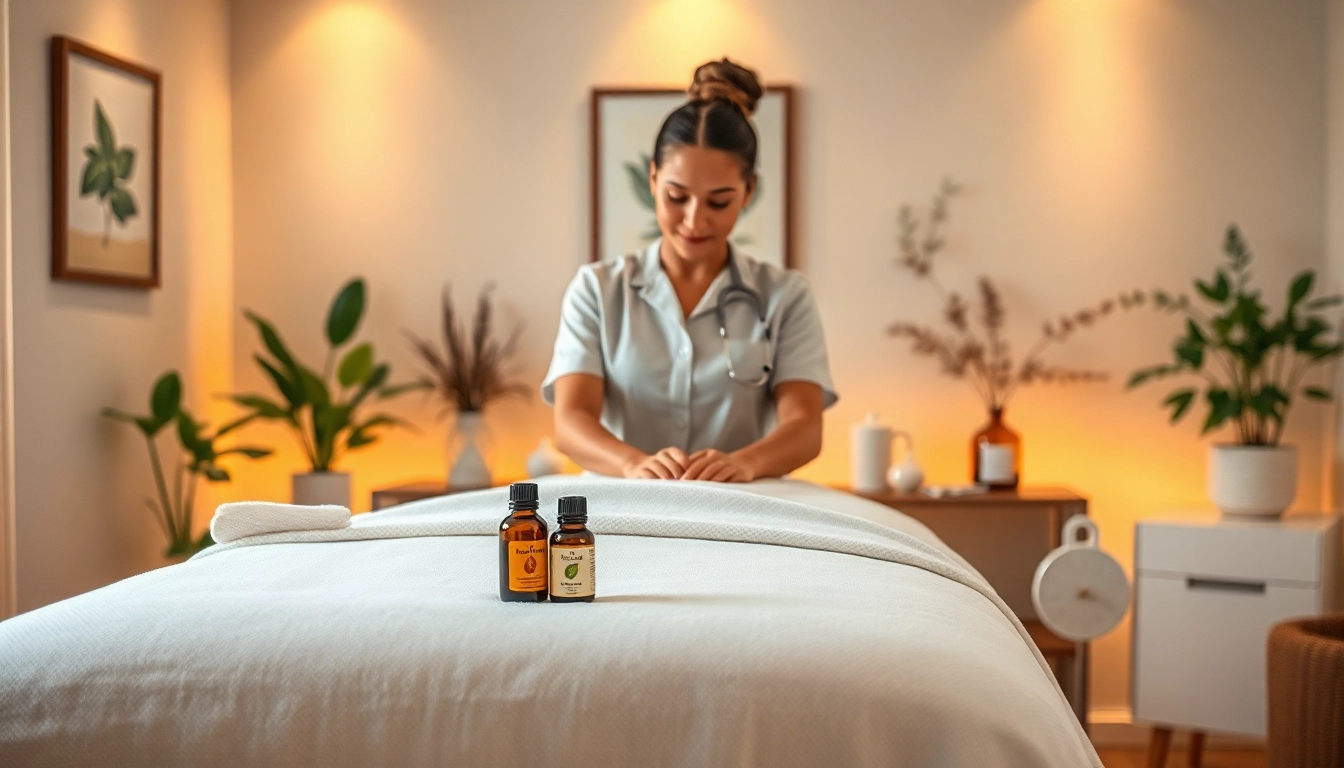Understanding Whole Body Vibration Therapy
What is Whole Body Vibration Therapy?
Whole body vibration therapy (WBV) is a treatment technique that involves the use of a vibrating platform to stimulate the body. This therapy requires individuals to either stand, sit, or lie on a machine with a vibrating surface. As the machine emits vibrations, it sends kinetic energy to the body, inducing rapid muscle contractions and relaxations. This involuntary muscle activity may contribute to muscle strengthening, improved circulation, and enhanced overall bodily functions. The gentle oscillations of the platform can engage various muscle groups while minimizing the impact on joints, making it a favorable exercise alternative for many.
Increasingly, health professionals are recognizing the multifaceted benefits of incorporating whole body vibration therapy into fitness regimes, rehabilitation practices, and holistic wellness strategies.
How Does Whole Body Vibration Therapy Work?
The mechanism behind WBV is relatively straightforward. When the machine vibrates, it transmits energy through the body. This causes muscles to contract and relax at an accelerated pace—often dozens of times per second. As a result, this stimulates the physiological processes associated with exercise, even if the individual is not actively moving. The vibrations impact muscle fiber recruitment and the neuromuscular system, resulting in various biological responses including increased blood flow, enhanced lymphatic drainage, and improved metabolic rates.
Different machines may have varied vibration frequencies and amplitudes, and these factors can influence the effectiveness and safety of the therapy. For example, low frequencies tend to promote relaxation and recovery, while higher frequencies can enhance muscle strength and explosive power.
Historical Context and Evolution of Whole Body Vibration Therapy
The concept of using vibration for health dates back many centuries. Historically, devices like sandbags, vibrating belts, and mechanical massagers have been utilized for therapeutic benefits. In the early 20th century, physical rehabilitation practices began to integrate more sophisticated forms of vibration therapy.
Recent decades have seen a surge in the popularity of WBV, particularly within fitness and rehabilitation communities. Initially used in professional sports to aid recovery and enhance performance, interest has expanded to include general wellness and therapeutic applications for those with diverse health conditions, capturing the attention of researchers and healthcare providers alike.
Benefits of Whole Body Vibration Therapy
Physical Health Improvements from Whole Body Vibration Therapy
Numerous studies suggest that WBV can contribute significantly to physical health. Key benefits may include:
- Muscle Strengthening: Research indicates that WBV can enhance muscle strength, especially in individuals who might find traditional workout methods challenging due to joint issues, age, or mobility restrictions.
- Improved Balance and Stability: Regular use of WBV can lead to enhanced balance through stimulation of the proprioceptive system. Especially beneficial for older adults, this may help reduce fall risk.
- Enhanced Circulation: The oscillatory motion of the vibrating platform aids in stimulating blood flow, which can promote better oxygenation of tissues and expedite recovery post-exercise or injury.
- Bone Density Improvement: Some studies suggest that WBV may have a positive effect on bone density by stimulating bone-forming cells, making it a potential option for osteoporosis prevention.
- Weight Management: Although not a substitute for traditional exercise, WBV may contribute to body composition improvements when integrated into a balanced fitness regimen.
Mental Health and Wellness Benefits of Whole Body Vibration Therapy
Beyond the physical improvements, the mental health benefits of WBV are also noteworthy. The stimulation of endorphin release through controlled vibrations can lead to improved mood, reduced anxiety levels, and enhanced overall well-being. Regular engagement with WBV therapy may also promote relaxation and decrease stress levels, providing a holistic approach to mental health support.
For individuals with conditions such as depression or chronic anxiety, the therapy offers a low-impact option that can help re-engage them with physical activity, thereby enhancing their psychological empowerment and self-efficacy.
Potential Applications in Physiotherapy and Rehabilitation
Whole body vibration therapy has gained traction within physiotherapy settings as an adjunct to traditional rehabilitation programs. Key applications include:
- Post-Injury Rehabilitation: WBV can help in restoring neuromuscular function and muscle strength after injuries or surgeries.
- Chronic Pain Management: By affecting the neuromuscular and intrinsic processes, WBV can be an effective component in pain management strategies.
- Neurological Rehabilitation: For conditions such as stroke, Parkinson’s, and multiple sclerosis, WBV may stimulate movement patterns and assist in motor control.
As practitioners become more aware of the versatility and efficacy of WBV, these applications are likely to expand, further integrating vibrational therapy into mainstream rehabilitation practices.
Considerations and Safety in Whole Body Vibration Therapy
Who Should Avoid Whole Body Vibration Therapy?
While whole body vibration therapy has numerous benefits, it isn’t suitable for everyone. Individuals with certain health conditions should exercise caution or consult healthcare professionals before starting therapy. Contraindicated conditions may include:
- Pregnancy
- Pacemakers or other implanted medical devices
- Recent surgeries or serious health conditions
- Acute muscle or joint injuries
- Severe osteoporosis or other bone diseases
A healthcare provider should ideally conduct a thorough assessment to determine the appropriateness of WBV therapy based on individual health profiles.
Common Myths and Misconceptions about Whole Body Vibration Therapy
As with many wellness modalities, misconceptions abound regarding Whole Body Vibration Therapy. Common myths include:
- WBV is just for athletes: While athletes may benefit from enhanced performance, WBV is suitable for all fitness levels and can greatly aid individuals in recovery or older adults seeking to improve mobility.
- It replaces traditional exercise: WBV is an excellent adjunct to exercise but should not be considered a complete substitute for aerobic or strength training.
- WBV is dangerous: When performed correctly and under guidance, the therapy is generally safe, though adherence to recommended guidelines is crucial.
How to Choose the Right Equipment for Whole Body Vibration Therapy
Selecting the appropriate equipment for WBV is essential for maximizing benefits and minimizing risks. Considerations should include:
- Frequency and Amplitude: Machines that offer variable settings enable users to tailor sessions to their specific comfort levels and fitness goals.
- Control Features: Equipments with manual controls allow for adjustments during sessions, promoting a more personalized experience.
- Weight Capacity: Ensure the platform can accommodate the user’s weight to prevent any safety hazards.
- Machine Stability: A sturdy construction minimizes unnecessary vibrations that could lead to injury.
Purchasing from reputable manufacturers that offer warranties and return policies can also enhance safety and customer satisfaction.
Integrating Whole Body Vibration Therapy into Your Routine
Effective Techniques and Exercises for Whole Body Vibration Therapy
Integrating WBV into a fitness routine can involve various techniques and exercises tailored to individual preferences and objectives. Here are some effective methods:
- Squats: Performing squats on the vibrating platform can enhance lower body strength while engaging core muscles.
- Stretches: Utilizing the vibrations during stretches can increase muscle flexibility and improve overall mobility.
- Static Positions: Holding a static position can also stimulate muscle contractions without significant movement.
Beginners should start with short sessions (around 10 minutes) and gradually increase duration and intensity based on comfort levels and goals.
Creating a Balanced Fitness Plan with Whole Body Vibration Therapy
A well-rounded fitness routine should incorporate various modalities. Whole body vibration therapy can complement aerobic activities and strength training. Establishing a balanced plan should consider:
- Aerobic exercise, such as walking or cycling, to improve cardiovascular health.
- Traditional strength training exercises targeting major muscle groups.
- Flexibility and mobility workouts for overall body functionality.
- The inclusion of rest days to promote recovery and prevent overtraining.
Monitoring Progress and Setting Goals with Whole Body Vibration Therapy
Effective fitness programs require ongoing assessment and adjustment. Strategies to monitor progress while incorporating WBV include:
- Setting realistic, measurable goals (e.g., increased muscle strength or improved flexibility).
- Keeping a workout diary to document sessions, techniques used, and personal experiences.
- Conducting regular assessments through body measurements, fitness tests, and personal well-being evaluations.
Ongoing engagement and reflection can help individuals stay motivated and aligned with their wellness objectives.
The Future of Whole Body Vibration Therapy
Innovations and Trends in Whole Body Vibration Therapy
As research on whole body vibration therapy continues to evolve, emerging trends may shape future applications. Innovations could involve:
- Integration of advanced technology, such as smart platforms that track users’ metrics in real-time.
- Personalized therapy sessions based on individual responses and feedback loop systems.
- Expanded use in specialized therapies, such as sports rehabilitation and geriatric care, based on growing evidence base.
Research and Evidence Supporting Whole Body Vibration Therapy
The scientific scrutiny surrounding whole body vibration therapy has noteworthy implications. Numerous studies highlight its potential benefits, particularly within neuromuscular adaptation and health outcomes. As evidence builds, practitioners are likely to rely on both clinical insights and research findings to implement WBV more effectively in therapeutic settings.
Future research will undoubtedly focus on long-term impacts of WBV health outcomes, user experiences, and specific populations that benefit most significantly from the therapy.
Community and Support in Whole Body Vibration Therapy
Building supportive communities around whole body vibration therapy can enhance user experiences. Online forums, local meetups, and workshops enable individuals to share personal insights, tips, and challenges. They can foster an encouraging environment that supports adherence to routines and allows for shared motivation.
As awareness grows about whole body vibration therapy and its myriad benefits, such communities will play a crucial role in information sharing and collective well-being.



